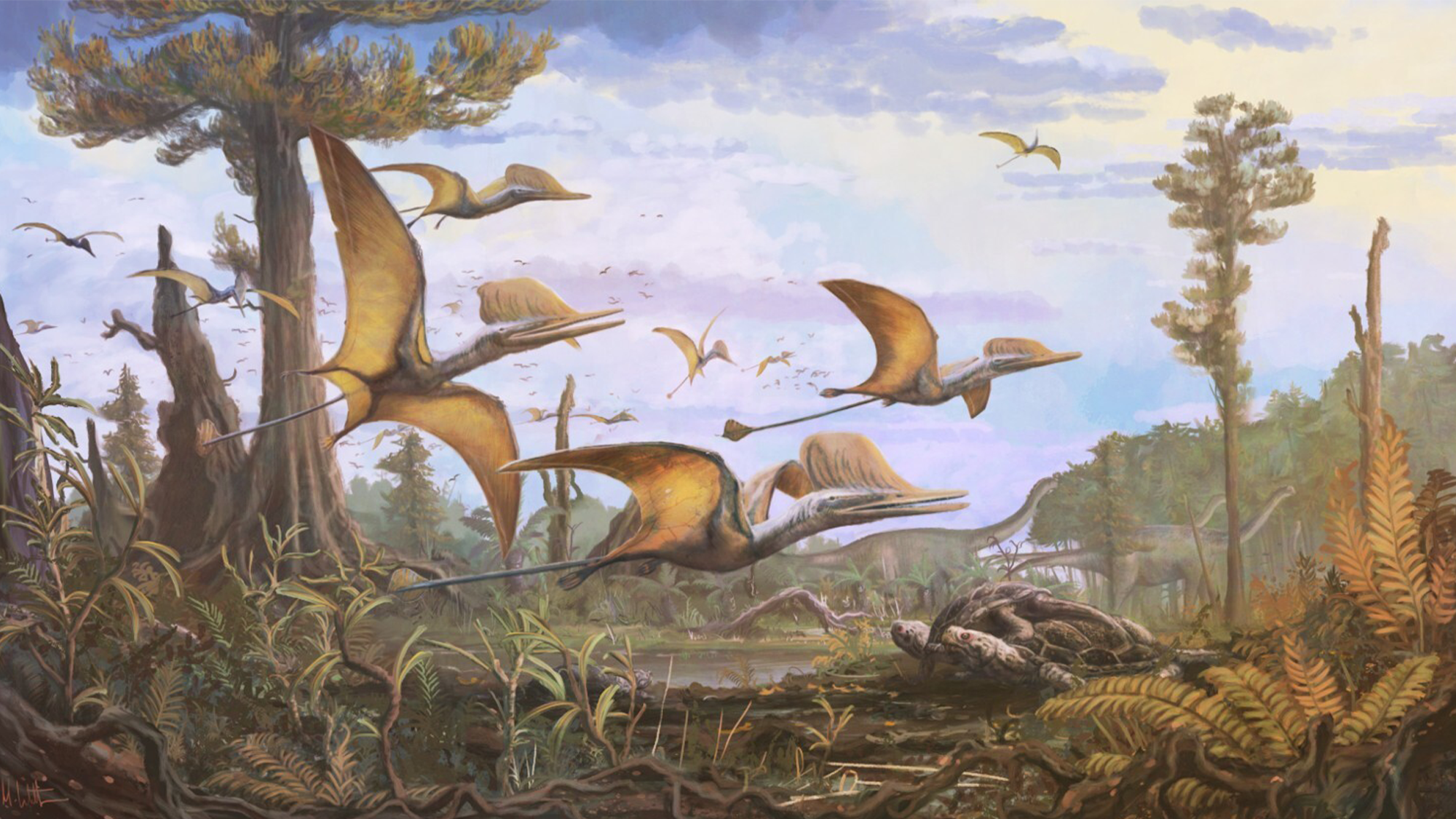

Paleontologists in the United Kingdom have discovered a new species of pterosaur on Scotand’s Isle of Skye. This reptile lived roughly 168 to 166 million years ago during the Middle Jurassic Era, when scientists previously thought that pterosaurs were only in present-day China. So the remains of a flying reptile showing up even in dinosaur-rich Scotland was quite a surprise. The new pterosaur is described in a study published February 5 in the Journal of Vertebrate Paleontology.
[Related: Dinosaur Cove reveals a petite pterosaur species.]
Meet Ceoptera
The new species is named Ceoptera evansae. It comes from the Scottish Gaelic word for mist or “cheò” and references the Gaelic name for the island “Eilean a’ Cheò,” or Isle of Mist. Evansae honors scientist Susan E. Evans, for her years of paleontological and morphological research, particularly on the Isle of Skye.
Scientists at the University of Bristol in England made digital models of the fossils using a CT scanner and believe that it likely had a wingspan of about three to five feet. It was likely a pterosaur species between the primitive and advanced stages of evolution. Pterosaurs in the Middle Jurassic were going through some major anatomical changes. Early smaller pterosaurs like the raven-sized Dimorphodon were giving way to later pterosaurs like Pteranodon, with the wingspans of small airplanes.
Ceoptera is likely part of the Darwinoptera clade of pterosaurs. Its discovery reveals that this clade–or a group of organisms that evolved from a common ancestor–is significantly more diverse than previously believed. The clade may have lasted more than 25 million years and species within the clade spread all over the world.
“Ceoptera helps to narrow down the timing of several major events in the evolution of flying reptiles. Its appearance in the Middle Jurassic of the UK was a complete surprise, as most of its close relatives are from China,” study co-author and Natural History Museum vertebrate paleontologist Paul Barrett said in a statement. “It shows that the advanced group of flying reptiles to which it belongs appeared earlier than we thought and quickly gained an almost worldwide distribution.”
A new 15-year-old discovery
The team used specimens from the reptile’s wings, backbone, shoulders, and legs that were first uncovered embedded in a rock on a beach in 2006. It took Natural History Museum fossil technicians Lu Allington-Jones close to two years to prepare the fossils for study because the rocks on the island are very hard and the fossil bones are delicate. According to the authors, the specimen is of the most complete pterosaur fossils found in the UK since paleontologist Mary Anning found the first one in 1828.

Pterosaur fossils are often found crushed, distorted, or incomplete. Like birds, they had hollow bones that were easily crushed and distorted over millions of years. The pterosaur record from both the Jurassic and the later Cretaceous Period (about 145-66 million years ago) in the UK has been sparse. Ceoptera helps fill in some of those evolutionary gaps.
“The time period that Ceoptera is from is one of the most important periods of pterosaur evolution, and is also one in which we have some of the fewest specimens, indicating its significance,” study co-author and University of Bristol paleobiologist Liz Martin-Silverstone said in a statement. “To find that there were more bones embedded within the rock, some of which were integral in identifying what kind of pterosaur Ceoptera is, made this an even better find than initially thought. It brings us one step closer to understanding where and when the more advanced pterosaurs evolved.”
[Related: This flightless pterosaur ancestor had enviable claws and a raptor-like beak.]
When pterosaurs dominated the sky
While insects were the first animals to take to the skies, pterosaurs were the first vertebrates to fly. Pterosaurs are technically not dinosaurs, but their evolutionary cousins. The biggest pterosaur scientists know of is Quetzalcoatlus northropi, which was found in Texas. Since everything is bigger in Texas, this pterosaur had a wingspan of about 32 to 36 feet. Australia’s largest pterosaur, Thapunngaka shawi, boasts a wingspan of roughly 22 feet.
Paleontologist and evolutionary biologist Steve Brusatte from the University of Edinburgh told the BBC that this Ceoptera was likely unique to Scotland.
“This is the time before birds, so pterosaurs ruled the sky,” said Brusette, who was not involved in the study. “This research shows that pterosaurs were common animals in Scotland, soaring over the heads of dinosaurs.”
